Smoke alarm purchasing advice: how to choose the right product
- What You Need to Know
- Smoke detectors provide a timely alarm in case of fire.
- Their installation is compulsory in new buildings in all federal states.
- Soon, smoke alarms will also be compulsory in all older buildings.
- Only correctly installed smoke alarms work reliably.
- Smoke alarm installation is the responsibility of the landlord.
- DIN 14606 ensures that only smoke detectors that basically fulfil their task are sold.
- High-quality Q smoke detectors have fewer false alarms and minimise the risk of user error.
Dangerous house fires
Only about three minutes are left to escape if a fire breaks out in the flat. That is roughly the duration of a typical pop song. So the occupants don’t have much time to get to safety. Once the fire is in full swing, conditions quickly develop in the room that are absolutely deadly for humans. The smoke gases develop temperatures of up to 500 degrees and thus not only set furnishings on fire as if by magic, but also inflict the most severe burns on people, even if they do not come into contact with the flames.
Most people, however, die in fires because of the smoke, which poisons them and takes away the air they can breathe. They suffocate. Just 100 grams of PU foam (polyurethane foam) can completely smoke up a three-room flat if it catches fire. The material is often used for upholstered furniture and mattresses.
When there is a fire, every second counts
If the occupants of a house notice a fire in time, they have a good chance of getting to safety. Often it can even be extinguished early. But if a fire starts at night, while most of the inhabitants are asleep, it can develop unchecked into a full fire. It is therefore not surprising that most fire victims die at night. People often suffocate in their sleep from the fumes. If they do wake up, escape routes are often already cut off by smoke and flames.
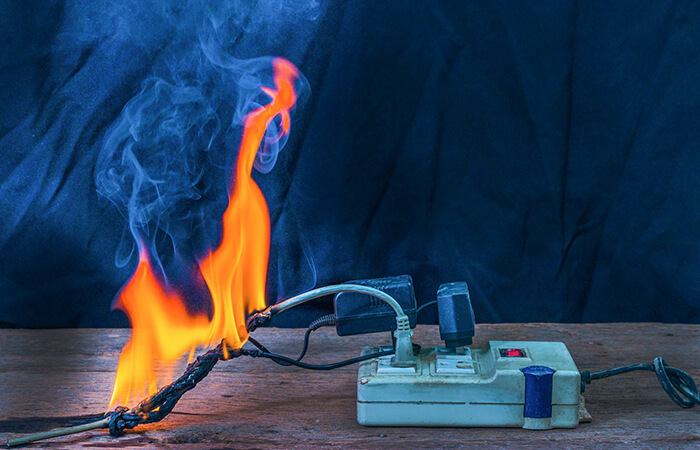
Smoke detectors, also known as smoke alarms, give people a decisive head start in case of fire. Their loud alarm signal wakes sleeping people before the smoke becomes life-threateningly thick. This gives them a chance to escape the fire. But even during the day, people are often first alerted to a fire by smoke alarms. If the fire is still in its early stages and has only affected a single object, it may even be possible to fight it with a suitable fire extinguisher or fire blanket before it causes worse damage.
Sources of danger in German households
Today, open flames are rare. Even candles are increasingly being replaced by electric LED candles. Nevertheless, house fires are a serious danger. They are often triggered by defective electrical appliances. According to the Federal Statistical Office, 343 people died in Germany in 2015 as a result of smoke and fire. This figure does not include the countless fire victims who survived but had to suffer the consequences for the rest of their lives. Severe burns are not only acutely life-threatening, but also leave clearly visible scars. Those affected often feel disfigured and struggle with a lack of self-confidence or even depression.
The number of people killed in fires has been on the rise again recently. The reason for this, according to experts: furniture, clothing, household goods – we own more and more objects made of easily combustible plastics. Furnishings such as foam mattresses or curtains made of synthetic fibres are literally fire hazards. If they catch fire, they are ablaze in no time. Another cause of the increasing fire hazard could be cheap electronics from abroad, which flood the German market with the help of online mail order. These devices often do not meet German safety requirements.
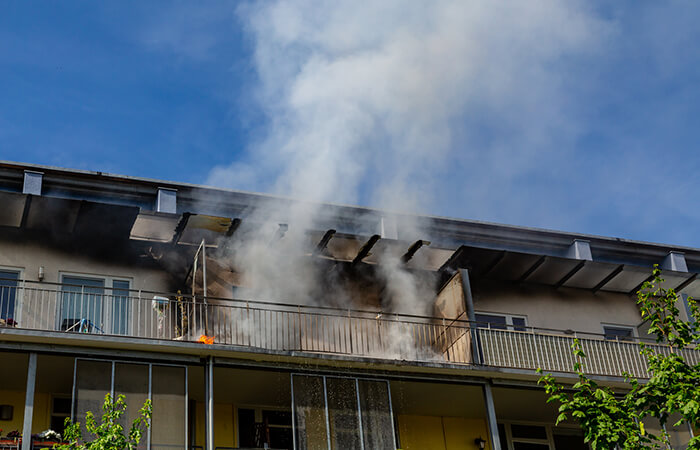
The perfect smoke detector
To the layman, all smoke detectors look very similar, yet the price range is wide. But how does the buyer recognise a good, reliable smoke detector? Does it really have to be the device that can be controlled via a smartphone app for more than a hundred euros or is a cheap copy from the rummage table at the DIY store that doesn’t even cost a tenner enough?
The DIN standard for smoke detectors
The good news for consumers is that in Germany, the criteria that a smoke detector must meet are strictly regulated. Every device sold in this country must comply with the DIN 14604 standard. It specifies a test procedure that ensures that smoke detectors really do fulfil their function in an emergency. Consumers can therefore buy inexpensive devices without worrying. More expensive devices are characterised above all by high-quality workmanship, a more attractive appearance, fewer false alarms and more convenient operation, but they are not necessarily safer.
Consumers can tell that a smoke detector complies with DIN 14604 by looking at the label. Smoke detectors that conform to the standard are permanently labelled with the following information:
- CE marking
- “DIN EN 14604”
- Number of the certificate of conformity
- Name and address of the manufacturer or importer
- Date of manufacture or production number
- Recommended replacement date
- Explanation of battery replacement and functional test
Only a properly installed and maintained smoke detector will sound the alarm reliably. There are therefore good reasons why the professional installation and maintenance of smoke alarms is standardised. The valid standard for this is DIN 14676, which is binding. If it is not complied with, the smoke detector obligation is not considered to have been fulfilled. However, it only applies to residential rooms and rooms used for similar purposes. It does not apply to rooms with commercial use or rooms with mandatory fire alarm systems. Stricter requirements apply there. Usually, warning systems are prescribed that automatically alert the fire brigade. What exactly DIN 14676 prescribes can be found in the section “Installation and maintenance”.
High-quality Q smoke detectors
Particularly high-quality smoke detectors are marked with the Q logo. It consists of the capital letter Q and a flame symbol inside it. The Q is awarded by the lobby association Forum Brandrauchprävention e.V. to devices that meet the association’s particularly strict requirements. In order for a smoke detector to bear the quality mark, it must have all the features prescribed by DIN 14604 and also be characterised by the following features:
- A permanently installed battery with a durability of at least 10 years
- A service life of at least 10 years proven by tests and permanent operational readiness during this time
- Protection against the penetration of foreign bodies into the measuring chamber
- High resistance to humidity, temperature changes, electromagnetic radiation and corrosion
- Improved electronics
- High mechanical stability of housing and components
In sum, all these features ensure a particularly high level of user-friendliness: as soon as Q smoke detectors are installed, they no longer cause any effort, with the exception of the annual function test. Neither is it necessary to deactivate them in case of annoying false alarms, nor does the battery have to be replaced. Q smoke detectors are the right choice for anyone who wants to have as little trouble as possible with their smoke detectors. Anyone looking for high-quality smoke detectors should look out for this quality mark.
Power supply
There are three variants for the power supply of smoke detectors: Smoke detectors that are powered by 230-volt mains current, smoke detectors with replaceable batteries and smoke detectors with built-in batteries.
Smoke detectors that are connected to the mains are much more complicated to install than battery-operated models. Battery-operated smoke detectors can be installed by laypersons without difficulty, but 230-volt smoke detectors should only be installed by a professional. For this reason, they are usually only used in commercial properties. In private households, they are the absolute exception. One advantage of these devices used to be that their backup battery had to be replaced less often than the battery of conventional smoke detectors. Since many mains-independent smoke detectors with built-in long-term batteries are now available, this advantage has become relative.
Smoke detectors with replaceable batteries are also no longer really recommendable. With them, there is a risk that the battery will discharge unnoticed. Since every smoke detector has to be replaced after ten years anyway – the reliability of the sensors decreases due to ageing processes – it is advisable to go straight for a smoke detector with a built-in battery. The long-life batteries used last just as long as the device itself. Smoke detectors with built-in batteries are easy to install, require little maintenance and are reliable. They are preferable to electrically powered models.
Loud alarm sirens
The alarm signal from smoke detectors is loud, and it should be. After all, in the event of a fire, the aim is to make everyone in the danger zone aware of the threat as quickly as possible. As a guideline, a smoke detector should reach a volume of at least 85 decibels from a distance of three metres. This is roughly equivalent to the sound pressure produced by a car engine or a diesel lawnmower. Particularly loud devices can even reach around 100 decibels, a volume that can be heard in the immediate vicinity of the loudspeakers in discotheques, for example. The volume of smoke detectors is usually printed on the packaging. If the customer does not find any information on this, it is better to switch to another model.
How expensive are smoke detectors?
The costs for smoke detectors are actually very manageable. Good devices are available for as little as 20 euros. According to the Tenants’ Association, it costs between 50 and 100 euros to equip a three-room flat with smoke detectors. This is true at least if the tenants install and maintain the devices themselves, which is usually the case for owner-occupied houses and flats.
In rented flats, the situation is somewhat more complicated. It is the landlord’s responsibility to equip them with smoke detectors. As a rule, the landlord hires a specialised company to do this, and not always the cheapest provider. If a specialist installs the devices, the costs often double or triple compared to installing them yourself. Costs also arise from the annual inspection and maintenance. Property companies often rent smoke detectors from service companies, which results in annual rental costs that, calculated over the entire life of the smoke detector, significantly exceed its purchase price.
The fact that landlords are not always particularly thrifty when it comes to smoke detectors might not really matter to tenants. However, flat owners often pass on the costs to the tenant. They add the purchase costs to the annual rent as a modernisation measure and include the running costs in the operating costs.
Are landlords allowed to do this? In the case of maintenance, the legal situation is clear. The Federal Court of Justice (BGH) has confirmed several times that it may be included in the operating costs. The apportionment of acquisition costs to the rent is also relatively uncontroversial. However, it is disputed whether the rental costs for smoke detectors may be included in the operating costs. The courts have different opinions on this. On the whole, however, it can be assumed that although the installation of smoke detectors is the landlord’s duty, the costs are usually charged to the tenant.
Simple installation
There are two mounting options for smoke detectors: Screws or adhesive pads. Usually, a smoke detector is delivered with either one or the other mounting accessory. Since the holding force is matched to the device, it is always the safest option to use the enclosed mounting accessories.
Adhesive pads are the easiest to use. They can be installed without tools and there is no need to drill holes in the ceiling – so there is no risk of accidentally drilling into a power line. Depending on the condition of the ceiling, however, the adhesive pads may not hold securely and the smoke detector may fall down. Fixing with screws is more reliable. A do-it-yourselfer with some experience in using a drill should have no difficulty screwing a smoke detector to the ceiling. He should wear protective goggles, as otherwise ejected dust will trickle into his eyes when drilling overhead.
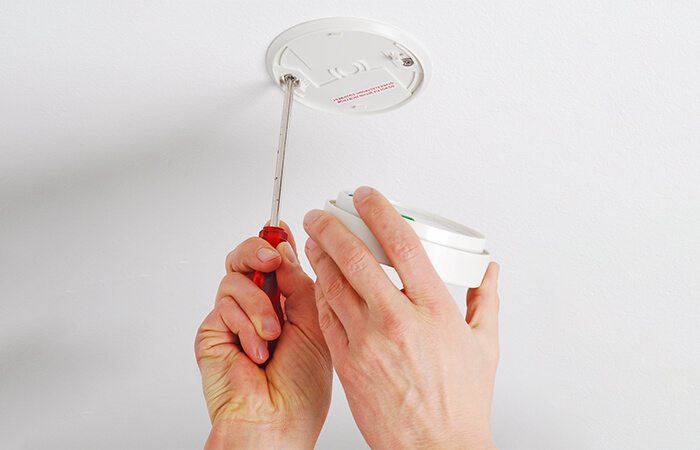
The trade offers magnetic mounting sets as accessories for smoke detectors, which are very popular with customers. However, the money spent on them is usually better invested in a higher-quality smoke detector, because the magnetic holders are neither significantly easier to use nor safer.
Installation and maintenance
In Germany, there is not only a standard for smoke detectors themselves, but also for their installation and maintenance. DIN 14676 contains a whole series of regulations:
- Only smoke alarms that comply with DIN 14604 may be installed.
- All bedrooms, children’s rooms and corridors must be equipped with smoke alarms.
- In multi-storey rooms that are open to the top, a smoke alarm must be installed on the top level.
- Furthermore, it is recommended to equip all rooms except kitchen and bathroom with a smoke alarm device and to install one on each level.
- There is only an obligation to install smoke alarms in kitchens if false alarms can be ruled out.
- Both the installation of individual detectors and the installation of devices networked via radio are permissible.
- Smoke alarms are not a substitute for a required fire alarm system and may not be connected to such a system.
- If smoke detectors are operated with 230 volt current from the mains, they also require an emergency power supply (battery).
- For rooms up to 60 square metres in size, one smoke alarm device is required. If the room is larger, two must be installed.
- Smoke alarm devices must be installed in the centre of the ceiling. The permissible minimum distance to walls and furnishings is 50 centimetres.
- If people outside the monitored room are to be alerted, radio smoke detectors are recommended. These devices can be networked with each other, and the alarm is forwarded to all detectors in the network.
In addition, the standard contains rules for the maintenance and servicing of smoke detectors: Smoke alarms must be covered during work that generates dust and steam. The annual functional test includes both a visual inspection for damage and contamination and a test of the alarm function with the test button. The battery must be replaced if it no longer supplies sufficient power. If a smoke detector does not have a replaceable battery, it must be replaced as soon as a battery malfunction occurs.
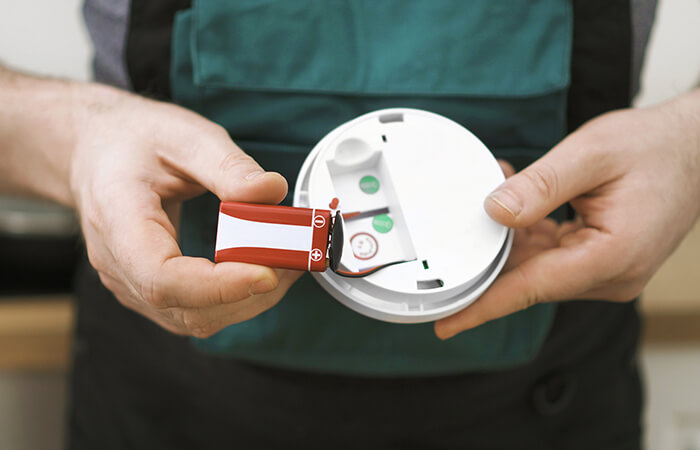
If you follow these rules, you cannot go far wrong when installing and maintaining smoke detectors. However, they are not sufficient for certain spatial conditions. For example, if the room does not have a square floor plan or the ceiling is not flat, the question arises: where to put the smoke detector?
Special case 1: Sloping roof
At the highest point of rooms with sloping ceilings, cushions of warm air often form, which the smoke passes by in case of fire. Smoke detectors installed there would not give a reliable alarm. That is why the following rule applies: In the case of a sloping roof, the smoke detector must be installed at least 90 centimetres horizontally and 30 to 50 centimetres vertically from the highest point. However, this only applies if the angle of inclination of the ceiling is more than 20 degrees. If the slope of the ceiling is less, the same rules apply for mounting the smoke detector as for a flat ceiling.
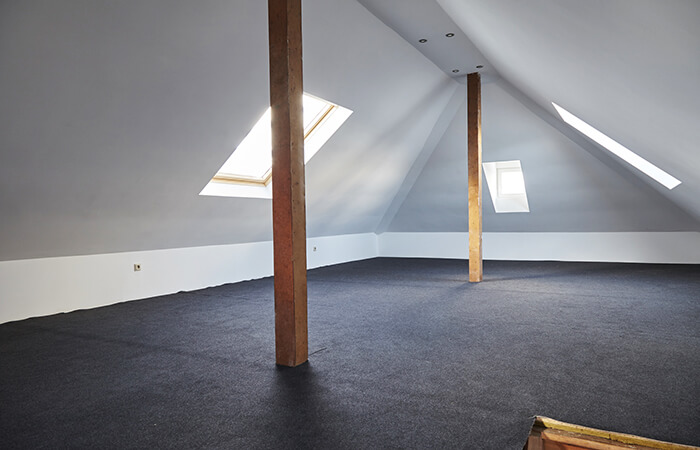
Special case 2: L-shaped rooms
In an L-shaped room, the smoke detector is always mounted on the mitre line (the imaginary connecting line between the inner edge and the outer edge in the bend of the L-shape) of the two room sections. However, if it is a very large room with an L-shape (larger than 60 square metres), each room section is treated as a separate room and thus requires its own smoke detector.
Special case 3: Small rooms
In small rooms, for example in corridors, it is often not possible to maintain the prescribed minimum distance from the wall (50 centimetres). If this is the case, the smoke detector must be mounted centrally on the ceiling.
Special case 4: Beams or ceiling joists
Ceiling beams (in technical language: joists) have no influence on the installation of smoke detectors if their height is less than 20 centimetres. They also have no effect if the individual ceiling bays are smaller than 36 square metres. The smoke detectors can then be mounted either on the ceiling bays or on the beams.
However, if the height of the joists is more than 20 centimetres and the area of at least one ceiling panel is more than 36 square metres, a smoke detector must be placed in each ceiling panel. This is relevant for residents of large lofts; however, in most other rented flats such large rooms are hardly ever found.
Special case 5: Long corridors
Special regulations apply to long corridors that are narrower than three metres. There, the first smoke detector must be installed at a distance of 7.5 metres from the end wall and each subsequent one at a distance of 15 metres from the previous one. For corridors wider than three metres, the same rules apply as for all other rooms. Again, this regulation rarely affects private living spaces.
How smoke detectors work
Today, optical smoke detectors are the standard in living rooms. They work according to the scattered light method. The smoke detector contains a light source, usually an LED (light-emitting diode), and an optical sensor. The detector is designed in such a way that under normal conditions the light from the LED does not fall on the sensor. However, when smoke is present, the particles suspended in the air deflect the light beam, it falls on the sensor and the smoke detector sounds the alarm.
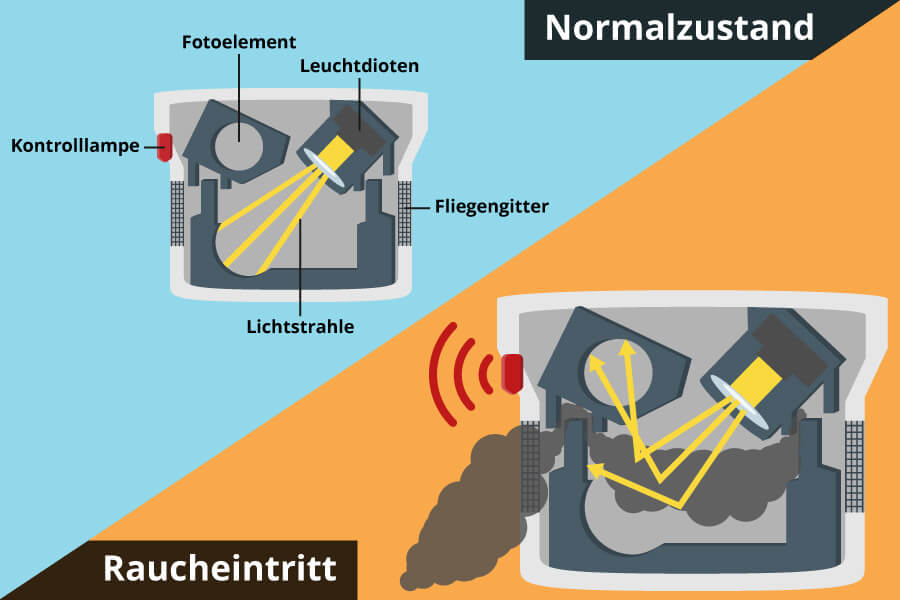
Due to its design, an optical smoke detector cannot distinguish between smoke and other fine particles, which is why it is also triggered by steam and dust. Because of the frequent false alarms, smoke detectors should not be used in kitchens and bathrooms. To protect these rooms as well, consumers should use detectors equipped with other sensors.
CO detector
The sensor of a CO detector is made of a material whose electrical conductivity changes when it comes into contact with carbon monoxide (CO). This gas is produced during the incomplete combustion of substances containing carbon. When it is absorbed through breathing, it reacts with the oxygen in the blood to form CO2 (carbon dioxide). This deprives the blood of oxygen, which quickly leads to suffocation. Poisoning with the colourless and odourless gas leads to disorientation and drowsiness. When people are exposed to dangerous concentrations of carbon monoxide while sleeping, for example due to a smouldering fire in the brickwork, they often suffocate without waking up first.
Poisoning with the colourless and odourless gas leads to disorientation and drowsiness. When people are exposed to dangerous concentrations of carbon monoxide while sleeping, for example due to a smouldering fire in the masonry, they often suffocate without waking up first.
Carbon monoxide detectors are often called smoke detectors. Since they do not react to steam or dust, they are suitable as an alternative to smoke detectors for rooms such as kitchens and bathrooms. Anyone who operates a gas boiler or a stove should definitely install a CO detector in addition to the smoke detectors near the place of combustion. Defects or faulty operation of these devices can lead to a life-threatening increase in the concentration of carbon monoxide in the room air, which is difficult to notice without a detector.
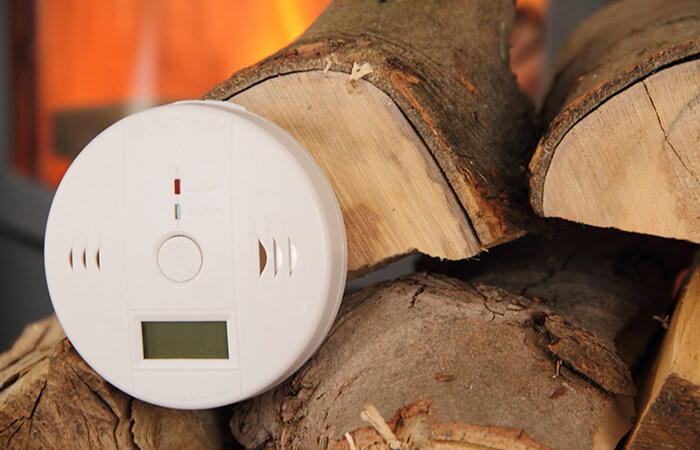
Heat detectors
Heat detectors are also known colloquially as heat detectors. They respond either to the exceeding of a certain temperature (about 60 degrees Celsius) or to a sudden rise in temperature. They work with an electronic temperature sensor similar to that of a digital thermometer and control electronics.
Heat detectors are significantly cheaper than smoke detectors or CO detectors. Since they also react much more sluggishly, they are rarely used in the area of personal protection. People who are awake can detect the fire themselves much earlier than a heat detector; sleeping people, on the other hand, could suffocate before the heat detector sounds the alarm The main field of application for heat detectors is property protection; they are used, for example, to control sprinkler systems.
Ionisation smoke detectors
So-called ionisation smoke detectors can also detect smoke particles that are invisible to optical smoke detectors, but they use a weakly radioactive substance for this purpose. Because of the radioactivity, strict regulations apply to their use. Among other things, after a fire, all fire debris must be disposed of expensively as hazardous waste if it is not possible to find and salvage all ionisation detectors. The development of modern optical smoke detectors, which are almost equal to them, makes the use of ionisation smoke detectors superfluous in most cases.
A smoke detector is not a fire detector
Smoke detectors are often referred to as fire detectors or fire alarms. However, this is not quite correct, because unlike smoke detectors, fire detectors not only alert the people on site, but also the fire brigade. This can be done manually, as in the case of the small red boxes where a glass pane has to be broken to press the button for the fire brigade emergency call. In the commercial sector, however, fire alarm systems are also often used. In these, smoke detectors are combined with fire detectors – if the smoke detector detects danger, it alerts both the people on site and the fire brigade.
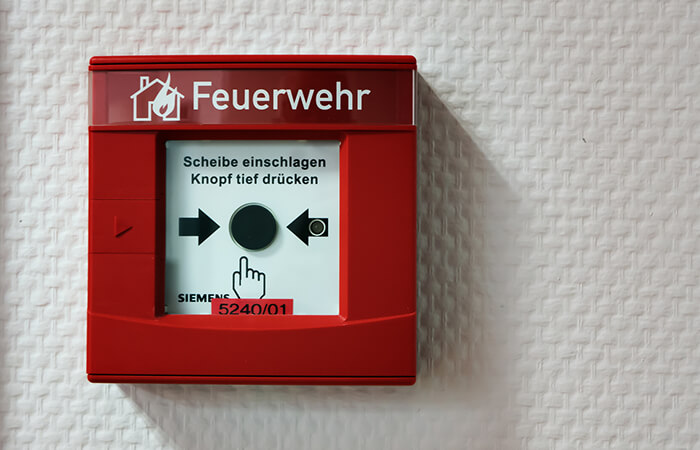
“Fire detector”, on the other hand, is the generic term for all devices and systems that serve to alert people in case of fire. These include, for example, smoke detectors, fire detectors and carbon monoxide detectors.
Smoke detectors with special functions
In addition to simple smoke detectors, whose function is usually limited to sounding the alarm when a certain concentration of particles in the air is reached, models with additional functions are also available. These devices are safer, more reliable, tailored to special requirements or simply particularly user-friendly.
Radio smoke detectors
A radio function makes it possible to combine several smoke detectors into a group. As soon as one of the detectors detects smoke, all the detectors in the group sound the alarm. This is particularly useful when larger residential units are to be secured.
Parents of small children in particular should consider purchasing wireless smoke detectors. Children do not behave rationally in a threatening situation such as a fire and are therefore dependent on the help of adults. With a wireless smoke detector, parents always notice a fire in the children’s room immediately and can rush to help their little ones.
Dual smoke detector
Not all fires produce enough smoke for a smoke detector to respond. If petrol catches fire, for example, there is hardly any smoke at all. A dual smoke detector combines an optical sensor with a heat sensor and thus also sounds the alarm for such fires. Dual smoke detectors are also characterised by a low false alarm rate. This is because they only react when the temperature of the smoke is high enough. Cigarette smoke or cooking steam will not trigger the alarm. With some models, it is possible to switch off the temperature sensor or the optical sensor. This means they can also be used as a pure optical smoke detector or a pure heat detector.
Smarthome smoke detector
Smarthome smoke detectors are, so to speak, the next evolutionary stage of wireless smoke detectors. They are not only networked with each other, but can also be controlled via a smarthome server. In this way, users benefit from interactions with other devices that are connected to the Smarthome system.
Smarthome-enabled smoke detectors, for example, are able to send a message to the user’s mobile phone in the event of an alarm. Some smarthome smoke detectors also allow their alarm siren to be shared with external systems, for example burglary protection. Control apps make it possible to track exactly in which room a smoke alarm was triggered, even remotely. It is also common for the battery charge status to be read out with remote maintenance software.
Smoke detectors for the deaf
How do deaf people actually become aware of the warning signals of a smoke detector? Light signal transmitters are made for them. The bright flashes of light that these warning devices emit can still be perceived even with closed eyes. Usually, the light warning system is not permanently built into the smoke detector. Instead, they are external devices that connect to the sensor by radio. They are often supplemented by vibration elements that are placed under the pillow.
Many well-known manufacturers, for example Ei Electronics, have now included smoke alarm systems for the deaf in their range. However, landlords are not obliged to install these special smoke detectors for deaf tenants. Nevertheless, tenants do not have to pay for the purchase and installation of the devices themselves, as the health insurance companies cover the costs.

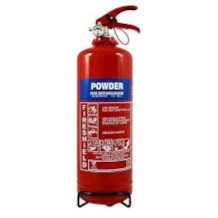
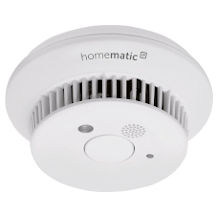
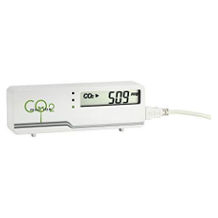
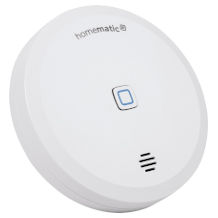
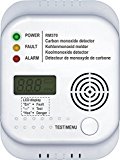
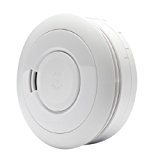
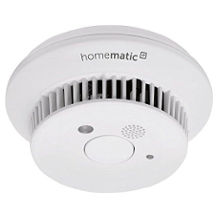

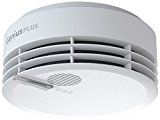
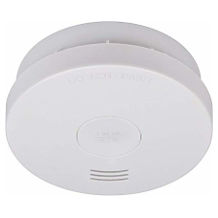
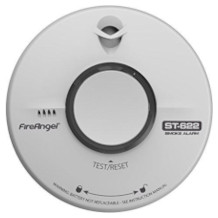
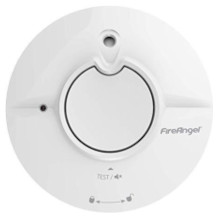
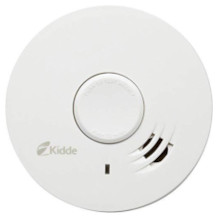
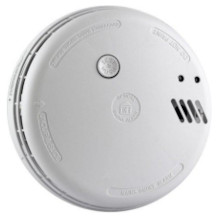
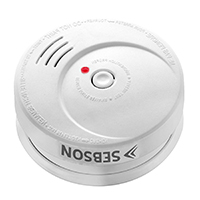
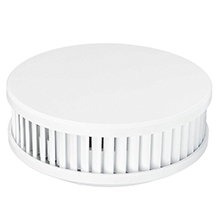
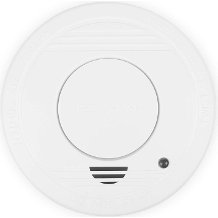
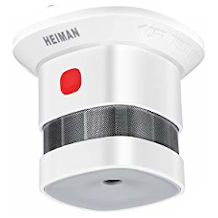
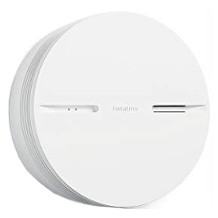
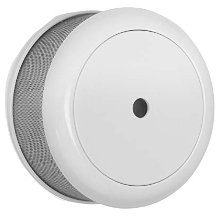
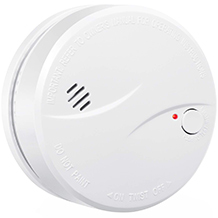

 8,501 reviews
8,501 reviews
